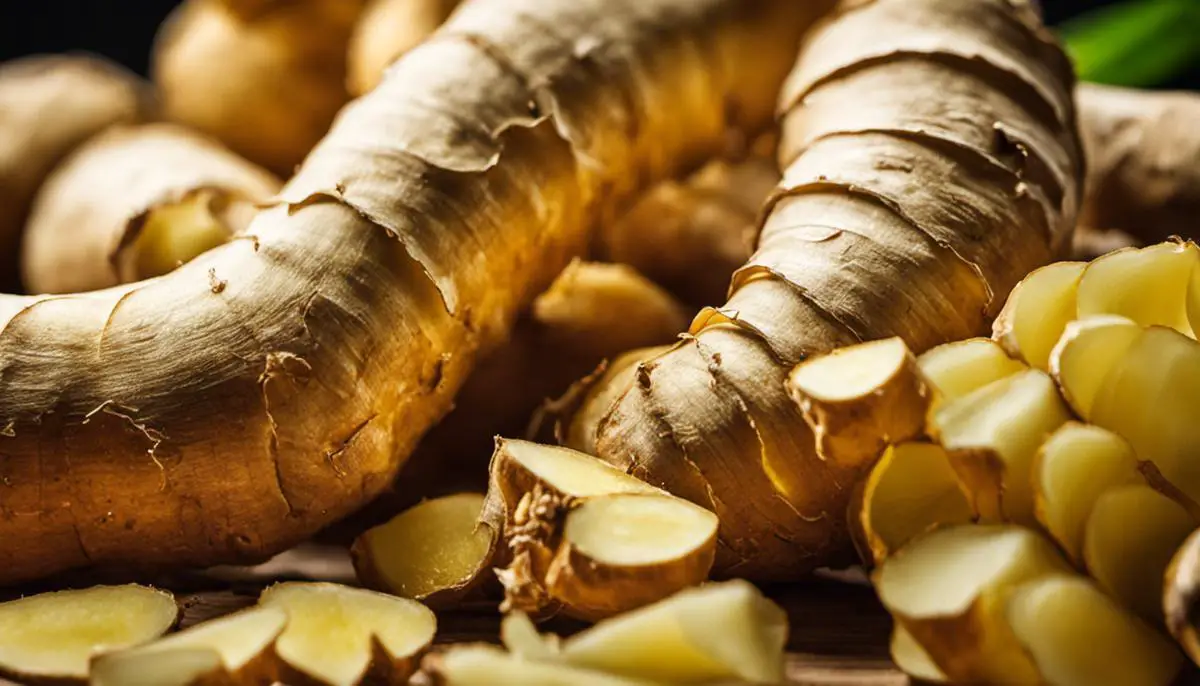Living with dyspepsia, a condition that causes discomfort and indigestion in the upper abdomen, requires certain lifestyle and dietary changes to manage effectively. A significant part of this management involves the consumption of specific foods that have been proven to ease dyspepsia symptoms. With an array of nutrient-rich foods ranging from hearty grains to lean proteins and soothing herbs, incorporating these foods into your meals can go a long way in managing dyspepsia symptoms. Here, we explore several such food items, including ginger, rice, oats, lean proteins, avocados, bananas, cucumbers, and noncitrus fruits that have shown their worth in battling this digestive issue.
Ginger
Down to the Root: Ginger for Digestive Relief
Hailed for centuries in traditional medicine for its diverse range of healing properties, ginger is a powerful plant used globally to soothe a temperamental stomach. Both gingerols, which gives ginger its characteristic spicy flavor, and shogaols, compounds that give dried ginger its pungent punch, work in harmony to aid digestion and relieve gastrointestinal discomfort.
When experiencing digestion problems such as dyspepsia, ginger can be the nifty natural remedy to turn to. The potent plant is beneficial in expediting stomach contractions, a process crucial to swift and efficient digestion. This acceleration helps move food and drinks out of the stomach to eliminate discomfort more rapidly, while also preventing excessive amounts of gas from building up, reducing bloating and discomfort.
How To Incorporate Ginger into Your Diet
Incorporating ginger into your diet is straightforward, versatile, and enjoyable. One of the easiest ways to bring this potent plant into your routine is to sip it as a comforting hot tea. Add freshly sliced ginger or dried ginger root to hot water, let it steep for several minutes, strain, and sip for a warming drink with effective digestive powers. Don’t fret if you’re not a fan of tea; this power-punching root can be used in many other digestible delights.
Adding ginger to your cooking is another way to get its digestion-positive perks while enhancing your meals with its zesty zing. Whether minced, chopped, sliced, or grated, it can be added to stir-fry, soups, sauces, salads, and even smoothies.
Alternatively, consider consuming slices of fresh ginger directly. The intense flavor may not suit everyone’s palate, but think of it as a digestive nip that can make a big difference in managing your symptoms of indigestion and dyspepsia. As a word of caution, though, while ginger can offer relief from occasional stomach disorders, do not use it to replace the guidance and treatment provided by a healthcare professional.
Precautions for Starting a Ginger Regimen
Introducing ginger into your diet should be approached with some caution. Start off slowly to see how your body responds and then adjust the amount as needed. It is also important to remember that although ginger is a natural product, it can still interact with certain medications. Always consult with a healthcare provider before incorporating significant amounts of ginger into your diet, especially if you are currently taking any medications or have existing health conditions.
By embracing the potent power of ginger, you can introduce a natural and tasty way to keep your digestive system running smoothly. It’s an easy addition to your food and drink that might just provide the gastrointestinal relief you’ve been seeking.
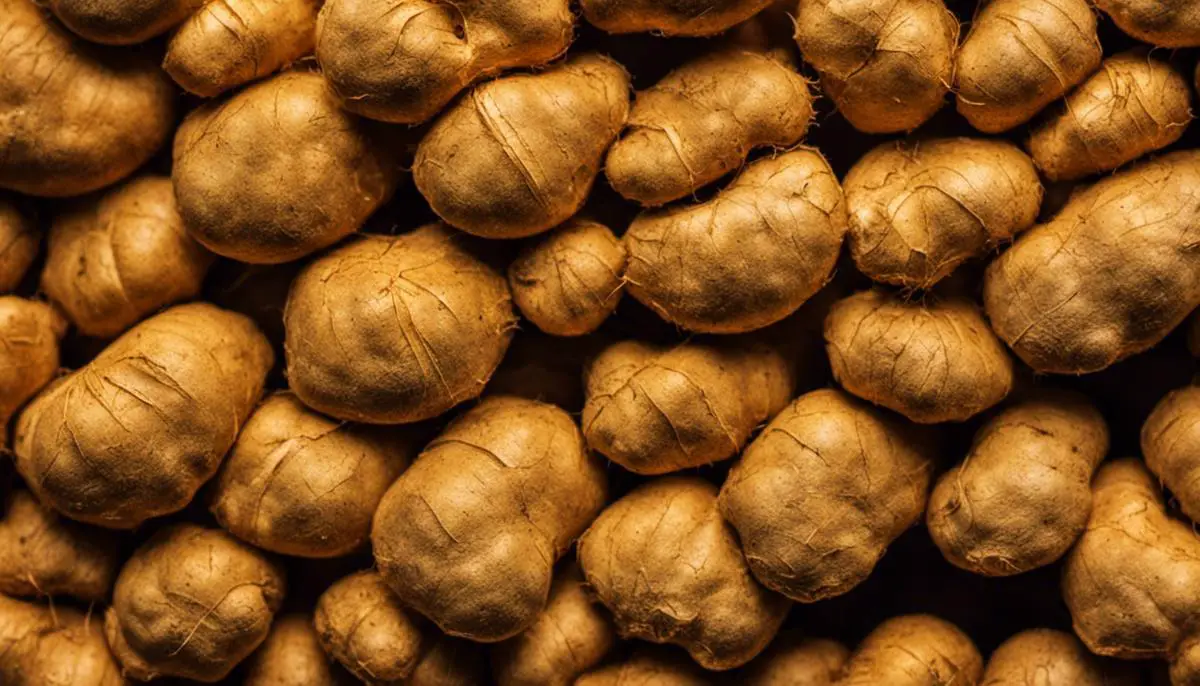
Rice and Oats
Rice and Oats: Digestion-Friendly Grains
One of the primary recommendations for those coping with dyspepsia, commonly known as indigestion, is the inclusion of rice and oats in their diet. These two grains are easily digestible, making them a wise choice compared to other, harsher foods that may irritate the digestive system.
The value of these grains comes from their all-natural and wholesome content. Rice and oats are a rich source of dietary fiber, which is vital for healthy digestion. This component helps not only to prevent constipation by aiding in the movement of food through the digestive system but also to reduce inflammation in the gut that can contribute to feelings of discomfort or bloating.
Rice, in particular, can absorb excess acid in your stomach, acting as a soothing balm for the stomach lining. Whether consumed as plain boiled rice or as risotto, it works to alleviate stomach aches and symptoms of dyspepsia effectively.
Meanwhile, oats, which can be consumed in various forms like oatmeal or granola, possess an additional advantage: they contain beta-glucan, a type of soluble fiber. When consumed, beta-glucan forms a gel that can help to slow down the process of digestion, offering a sense of fullness and preventing the onset of digestive discomfort.
Furthermore, both rice and oats are considered safe for those with gluten sensitivities, another common contributing factor to digestive discomfort. They offer you nutrition and satiety without compromising on your digestive comfort.
It’s also worth noting that you can combine these grains with other foods to create more varied and flavorful meals. Mix oats with fruits for breakfast or serve cooked rice with a portion of steamed vegetables for lunch or dinner. Ensuring a balanced and varied diet can also help to alleviate symptoms of dyspepsia.
In conclusion, rice and oats offer a multitude of benefits for those combating dyspepsia. Easy to cook, versatile in nature, and filled with the fiber-rich bounty, they are an essential addition to your diet for maintaining optimum digestive health.
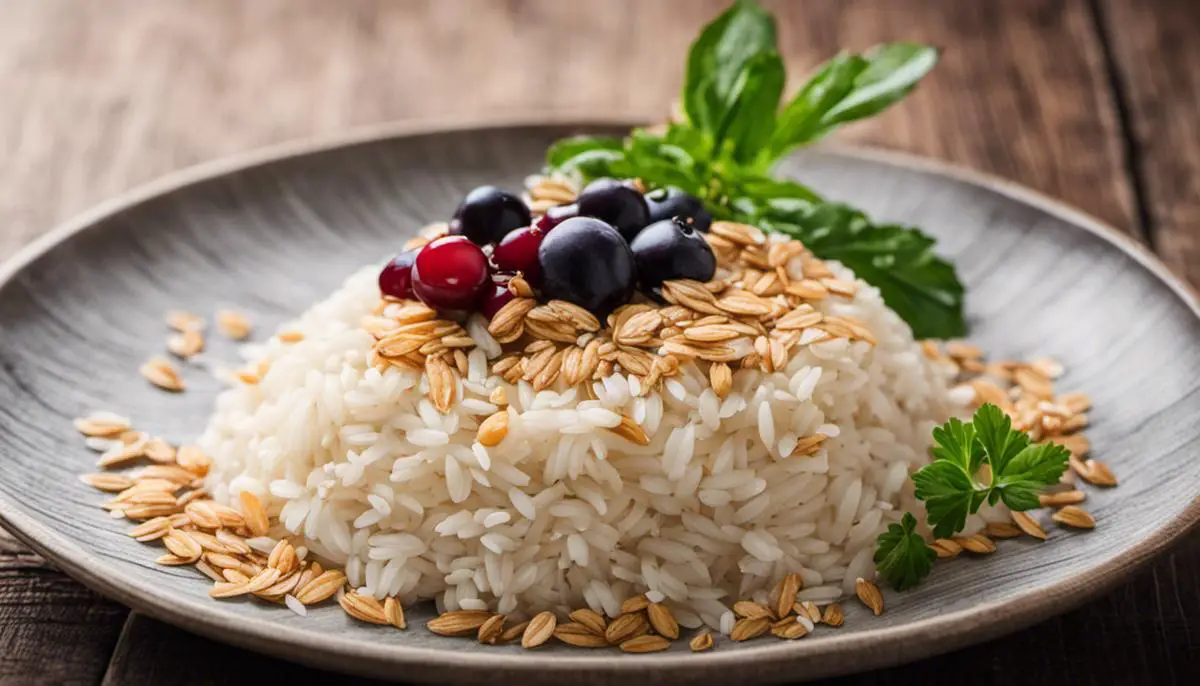
Lean Proteins
Lean Proteins: The Digestive Aid You Need
If your diet often leaves you with the woes of dyspepsia, it may be time to consider incorporating more lean proteins into your meals. Often overlooked but essential in promoting healthy digestion, these nutritional powerhouses are abundant in foods like chicken, turkey, fish, and tofu.
One of the key reasons why lean proteins are beneficial for individuals with dyspepsia is their lower acid production. Unlike their high-fat counterparts, lean proteins do not trigger your stomach to produce as much acid, which can be a common catalyst for indigestion.
Incorporating lean proteins into your diet can be a gamechanger for not only managing dyspepsia but improving your overall digestive health. They provide the necessary nutrients without the extra burden on your digestive system, making meals more enjoyable and less uncomfortable.
While increasing your intake of lean proteins, it’s equally important to consider your cooking methods. Opt for grilling, baking, or poaching methods to maintain the low-fat profile of these foods. Avoiding additional, unnecessary fats can make a significant difference in how your body processes the meal and ultimately reduce the pesky symptoms of dyspepsia.
Additionally, it’s essential to remember that everyone’s reaction to certain foods and activities varies, so be patient and give your body the time it needs to adjust when introducing changes to your diet.
Incorporating lean proteins could be your secret weapon against dyspepsia, offering a path towards enjoying meals freely again without the lingering fear of indigestion. Providing essential nutrients without creating excess stomach acid, these proteins could help shift your dietary plan, allowing you to manage and control dyspepsia in an effective and sustainable way.
Remember, the right foods can make a world of difference in managing your digestive health. And when it comes to dyspepsia, lean proteins could be exactly what your body needs. So give chicken, turkey, fish, or tofu a shot, and discover how they can help soothe your dyspepsia woes.

Avocados
When living with dyspepsia, which is also known as indigestion, it’s critical to choose foods that are beneficial to your digestive health rather than detrimental. One such food is the avocado, a versatile fruit with numerous health benefits, especially for those dealing with gastrointestinal disorders.
Avocados are packed with nutrients that aim to promote healthy digestion. They contain approximately 7 grams of fiber per 100 grams, which assists in maintaining a healthy digestive system. Fiber functions to regulate bowel movements, helping to prevent both constipation and diarrhea, common complications for those suffering from indigestion.
Additionally, avocados are a fantastic source of healthy monounsaturated fats. Unlike fried and fatty foods, which can further exacerbate acid reflux associated with dyspepsia, the fats found in avocados are helpful in controlling LDL cholesterol levels and reducing inflammation within the body.
Avocados are also recognized for their high content of potassium, an essential nutrient that helps regulate fluid balance within the body, thus aiding in digestion. With almost twice the potassium content of a banana, incorporating avocados into your diet is an effective way to bolster your digestive health.
What’s more, avocados are uniquely versatile in how they can be incorporated into meals. Whether it’s a smoothie for breakfast, a salad for lunch, or simply spread on toast, avocados can seamlessly fit into any diet plan.
These creamy fruits are low in acid, a plus for those dealing with dyspepsia, as foods high in acidity can trigger discomfort and worsen symptoms. Consequently, avocados are arguably a superior choice for anyone managing this common condition.
In conclusion, people living with dyspepsia should consider integrating avocados into their daily diets. The combination of fiber, monounsaturated fats, potassium, low acidity, and versatility makes them an excellent choice for supporting digestive health and combating the symptoms of dyspepsia.
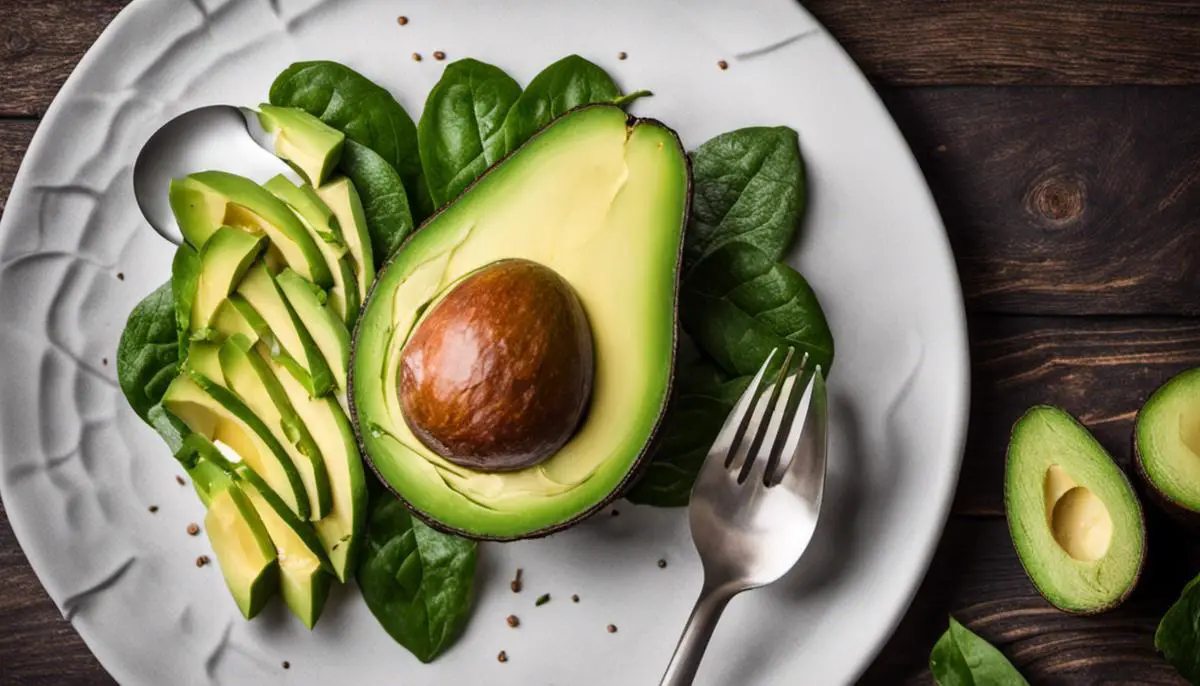
Bananas
Bananas: A Digestive Savior
Bananas have long been hailed as a perfect snack- light, portable, and packed with nutrients. But if you’re suffering from dyspepsia, bananas can offer much more than just convenient nutrition. They might just be the key to alleviating your symptoms and help settle your stomach.
High in fiber, bananas provide a gentle way to kickstart digestion and keep things moving in your system. This helps reduce bloating and the discomfort that comes with it. Unlike other high fiber foods, bananas do not introduce much gas into the digestive system, making them a good choice in managing symptoms of dyspepsia.
Bananas: The Natural Antacid
But that’s not all. Beyond simply aiding digestion, bananas work double time to soothe dyspepsia symptoms by acting as a natural antacid. They contain unique compounds that reduce irritation from stomach acid, a common culprit of many dyspepsia symptoms including heartburn and acid reflux.
Consuming a ripe banana after a meal can help neutralize the acid in your stomach, thus providing relief from an upset stomach and heartburn related to acid reflux. Keep in mind, the riper the banana, the higher its antacid properties.
Incorporating Bananas in Your Diet
Including bananas in your diet doesn’t have to mean just peeling and eating. You can add sliced bananas to your morning cereal or oatmeal, or blend them into smoothies. You could even choose to have a small banana as a dessert. This isn’t just a tasty way to wrap up a meal, it can also stave off heartburn and sour stomach problems that may be triggered by other types of dessert.
Remember, everyone’s stomach reacts differently to various foods. While bananas are a generally safe bet for dyspepsia sufferers, always listen to your own body and consult with a doctor or nutritionist about the best dietary choices for you. With bananas as a staple in your dyspepsia-friendly diet, you’re well on your way to reduced symptoms and improved overall digestive health.
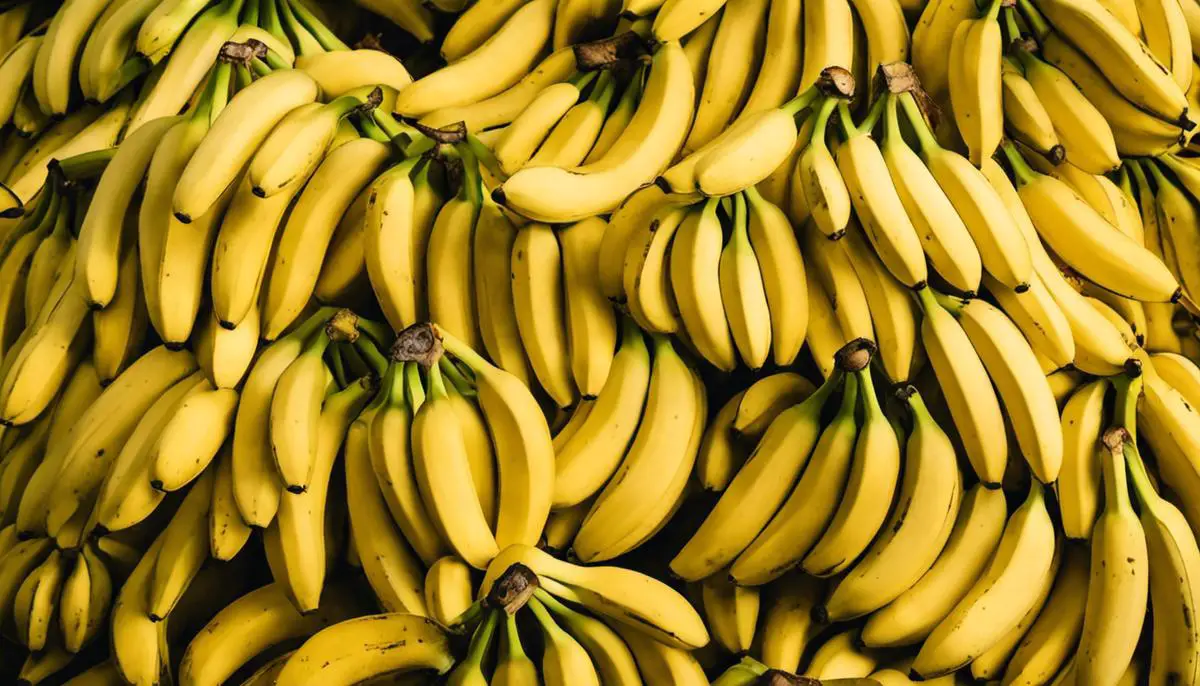
Cucumbers
Hydration and Inflammation: The Dual Benefits of Cucumbers
Cucumbers take center stage when it comes to managing dyspepsia. They are packed with high amounts of water that not only keep the body well-hydrated but also assist in reducing inflammation in the digestive tract. Hydration is crucial as it aids in the smooth movement of food through the digestive system and prevents symptoms such as constipation and bloating, commonly associated with dyspepsia..
Cooling Effect of Cucumbers on Digestive Tract
Beyond being crisp and refreshing, cucumbers bear a soothing effect on your digestive tract. When symptoms of dyspepsia flare up, like a burning sensation in the stomach or acid reflux, a cucumber’s coolness can provide immediate relief. Consuming cucumbers provides a calming effect, alleviating bloating, discomfort, and gas, thereby making them a pivotal part of a dyspepsia-friendly diet.
Cucumbers: A Fiber-Rich Choice
They are not just water, though. Cucumbers also offer a fair share of dietary fiber, an essential nutrient for a healthy digestive system. Fiber aids in adding bulk to your stools, assisting in their regular and easy passage. This process in turn reduces chances of constipation, reducing overall discomfort associated with dyspepsia.
The Low Acid Advantage
Individuals with dyspepsia often find that acidic foods exacerbate their symptoms. Here’s where cucumbers can come to the rescue again due to their low acid content. Infusing cucumbers into the diet can prevent potential triggers of dyspepsia, making meal times less of a struggle.
The Versatility of Cucumbers
Their versatility is another reason why cucumbers are a top pick for those dealing with dyspepsia. They can be incorporated into various dishes, salads, and even smoothies. Eating them raw, as a snack, or pickling for long-term use are other great dietary options. Essentially, adding cucumbers to your diet can serve as an effective natural strategy to handle dyspepsia.
Cucumbers: A Cautionary Note
As beneficial as cucumbers can be for dyspepsia, it’s essential to note that everyone’s body reacts differently. Some people might find that the seeds and skin of cucumbers can lead to gas and bloating. In such cases, it’s recommended to peel and deseed cucumbers before consumption.
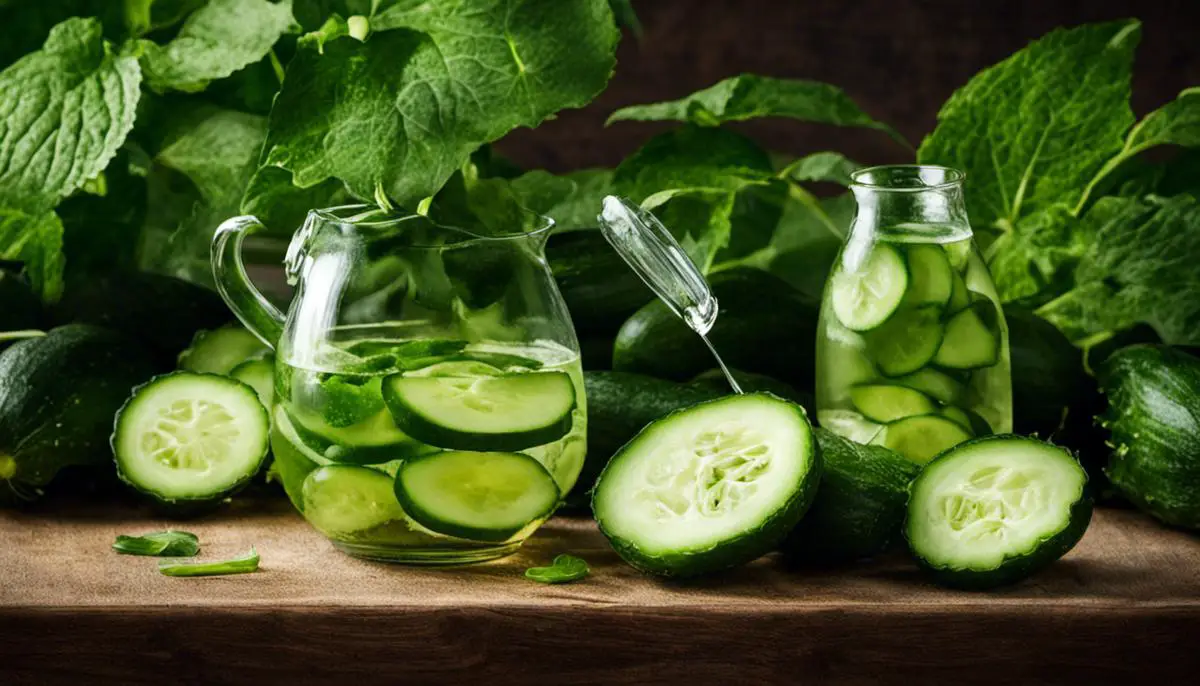
Noncitrus Fruits
Choose Noncitrus Fruits for a Tummy-friendly Diet
Noncitrus fruits have emerged as a popular choice for individuals seeking relief from dyspepsia, also known as indigestion. Packed with dietary fiber, fruits like pears, melons, and apples are among the top go-to food items for a gut-healthy diet. Dietary fiber has a reputation for maintaining a smooth-functioning digestive system, making these fruits indispensable for those grappling with severe dyspepsia and other digestive disorders.
Including these fruits in your daily diet can work wonders to keep disruptive and uncomfortable reflux symptoms at bay. Unlike their citrus counterparts, noncitrus fruits are significantly less acidic. Measured on the pH scale, these fruits land on the higher, more alkaline end, meaning they’re less likely to exacerbate acid reflux issues and contribute to feelings of indigestion.
Bite Into the Fiber-Rich Goodness of Apples
An apple a day does keep the doctor away, more so when it comes to digestive health. Apples stand tall as a powerhouse of pectin, a soluble fiber that aids in preventing constipation and promoting a healthier gut microbiome, and by extension, a more robust immune system. Additionally, apples are 86% water, further helping to ease digestion and make you feel fuller longer, thus indirectly aiding in weight control.
Pear-ing it Up, the Right Way
With a high water content and a good amount of dietary fiber, pears make a nutritious addition to your dyspepsia-friendly food list. Pears contain special compounds that can help alleviate heartburn, an often-uncomfortable symptom for those suffering from Gastroesophageal Reflux Disease (GERD). As an added bonus, pears also provide a rich dose of vitamins, essential for maintaining overall health.
Melons for a Hydrating Respite
Melons are particularly recommended for their high water content and alkaline nature. They are an ideal fruit for mitigating heartburn and are easy on the stomach, reducing chances of indigestion. Make sure to include a range of melons, such as cantaloupe and honeydew, for variety and broad nutritional coverage.
Remember, a balanced diet is key to a healthy life. Including these noncitrus fruits not just helps maintain a stable digestive system but safeguards your body against potential disruptions and ailments associated with dyspepsia and acid reflux. So, don’t forget to stock up your fruit basket with these tummy champions.

When it comes to managing dyspepsia, understanding your nutritional needs and dietary changes necessary is fundamental. By incorporating foods like ginger, non-citrus fruits, bananas, lean proteins, and cucumbers in your diet, you can grease the wheels of your digestion system for smoother operation. However, it’s vital to remember that making the right food choices isn’t a cure-all for dyspepsia – maintaining a balanced, nutritious diet and a healthy lifestyle are key too. Though dealing with dyspepsia may seem bothersome, including these beneficial foods in your daily regimen can significantly lessen digestive discomfort and pave the way towards better digestive health.
